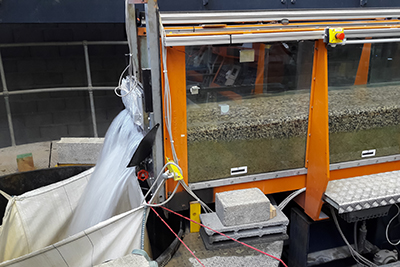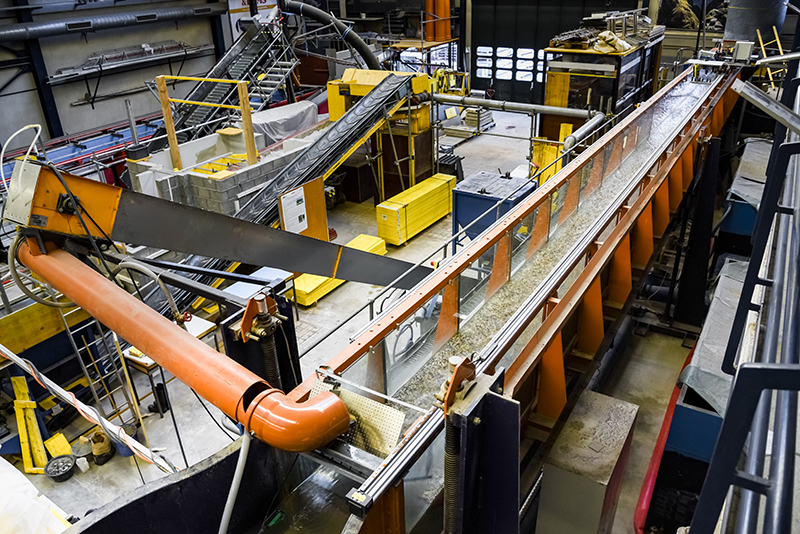Source: Geophysical Research Letters
Rivers transport sediment along their beds when the force of the flowing water exceeds the material’s cohesion and weight. Yet the rate at which this process occurs is known to vary considerably over time even when the water’s discharge is constant. Various explanations have been offered for these pulses, including the role played by grain sorting, but no clear connection has been established, to date.

Now, Dhont and Ancey consider whether sediment pulses could instead be related to the migration of bed forms—features like ripples, which develop in the bed as water flows across it. The team conducted an experiment in which they held the water discharge and rate of gravel supply constant in a steeply inclined, 19-meter-long flume for 570 hours and used state-of-the-art techniques to monitor the results.
The researchers found that within a few hours, the flume’s originally flat bed had developed into an alternating series of pools and gravel bars. Intriguingly, these bars displayed what the researchers call “stick-slip motion,” in which the sediment remained stable for long intervals but would then suddenly shift downstream. Collectively, these pulses, which occurred about every 10 hours on average, transported roughly one third of the total sediment volume. The remainder was carried downstream by cycles of accumulation in the pools, which stored and then sporadically released gravel, creating sediment waves that caused many of the observed fluctuations in sediment transport rates.

The authors note that they do not yet know whether their finding that sediment travels in regular, 10-hour pulses is a new observation of a previously unnoticed phenomenon or whether this stick-slip motion is specific to their experimental setting. If the former, these results may force other researchers who study sediment transport to reconsider how they model the long-term transport of gravel. (Geophysical Research Letters, https://doi.org/10.1029/2018GL077792, 2018)
—Terri Cook, Freelance Writer
Citation:
Cook, T. (2018), How are sediment pulses generated?, Eos, 99, https://doi.org/10.1029/2018EO102311. Published on 24 July 2018.
Text © 2018. The authors. CC BY-NC-ND 3.0
Except where otherwise noted, images are subject to copyright. Any reuse without express permission from the copyright owner is prohibited.

